Abstract
A water-filled body plethysmograph was constructed to measure gas exchange in man. As compared to an air-filled plethysmograph, its advantages were greater sensitivity, less thermal drift, and no change from adiabatic to isothermal conditions after a stepwise change of pressure. When five subjects were completely immersed within it and were breathing to the ambient atmosphere, they had a normal heart rate, oxygen consumption, CO2 output, and functional residual capacity. Pulmonary capillary blood flow ([unk]Qc) during and after Valsalva and Mueller maneuvers was calculated from measurements of N2O uptake. Control measurements of [unk]Qc were 2.58 liters/min per m2 at rest and 3.63 liters/min per m2 after moderate exercise. During the Valsalva maneuver at rest (intrapulmonary pressure: 24, SD 3.0, mm Hg), [unk]Qc decreased from a control of 2.58, SD 0.43, liters/min per m2 to 1.62, SD 0.26, liters/min per m2 with a decrease in pulmonary capillary stroke volume from a control of 42.4, SD 8.8, ml/stroke per m2 to 25.2, SD 5.5, ml/stroke per m2. After release of the Valsalva, there was an overshoot in [unk]Qc averaging +0.78, SD 0.41, liter/min per m2 accompanied by a significant increase in heart rate. Similar changes occurred during and after the Valsalva following moderate exercise. During the Mueller maneuver at rest and after exercise, [unk]Qc, heart rate, and central stroke volume did not change significantly.
Full text
PDF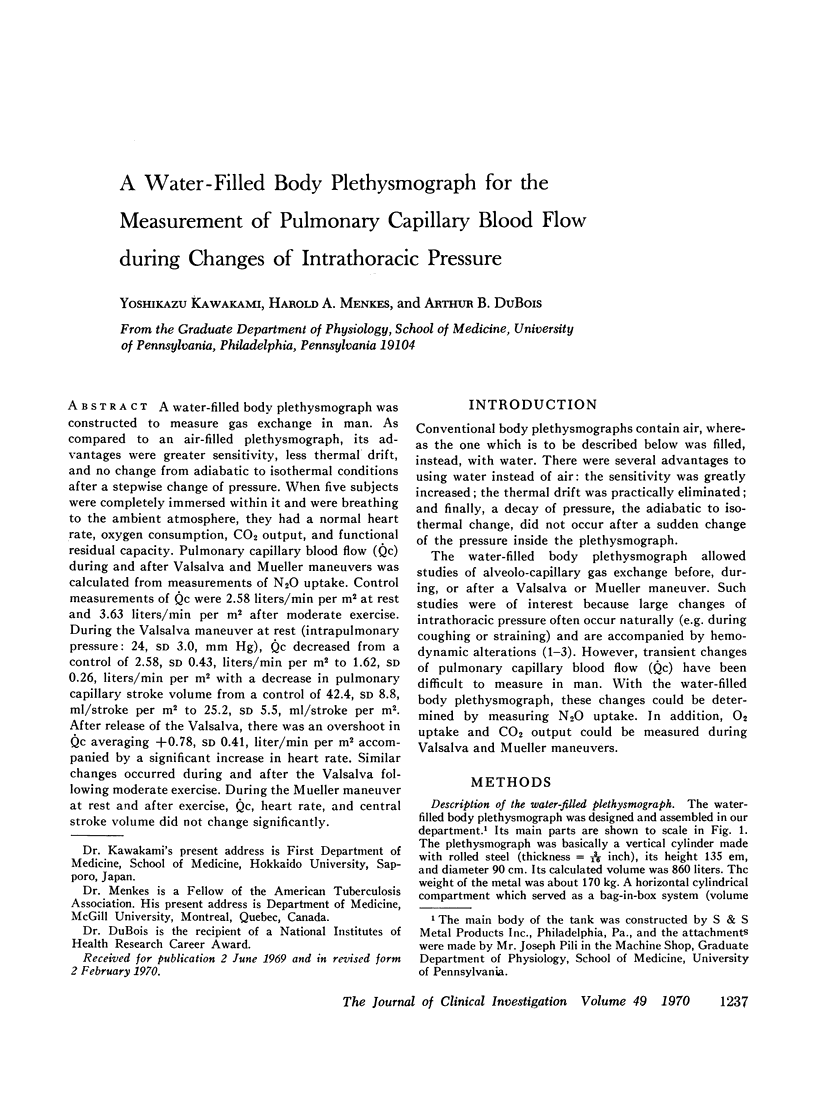
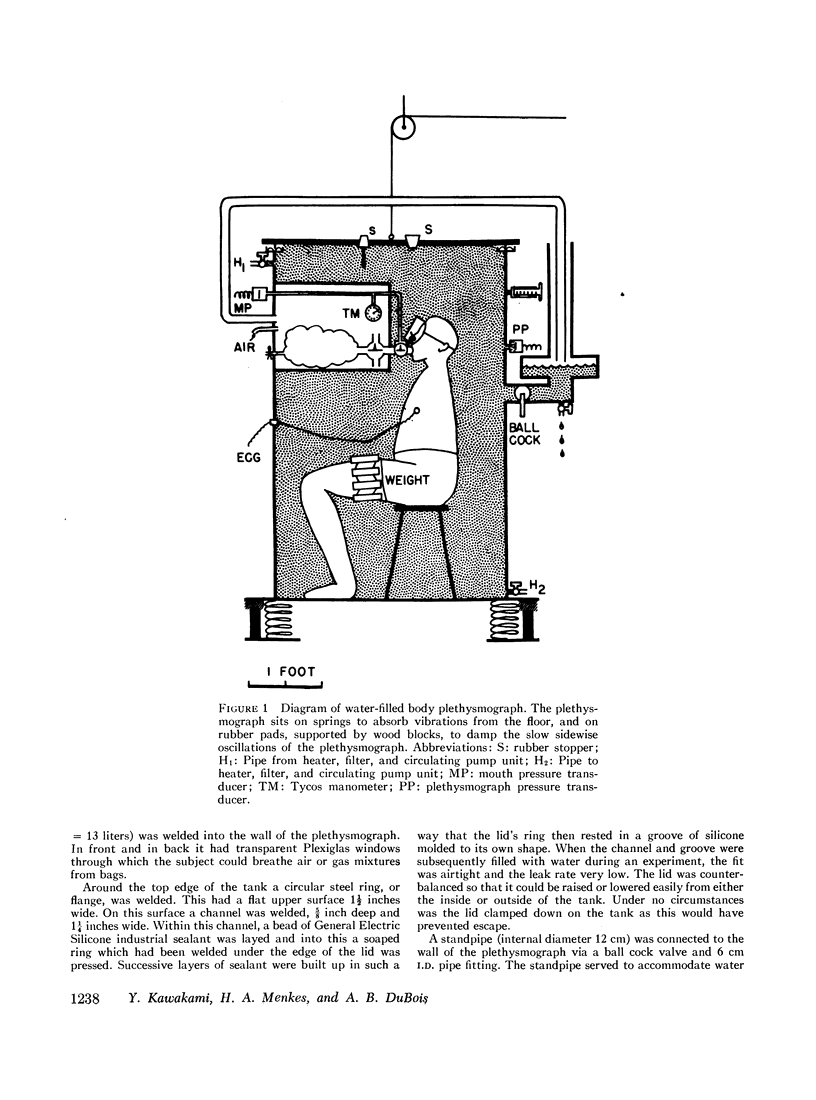
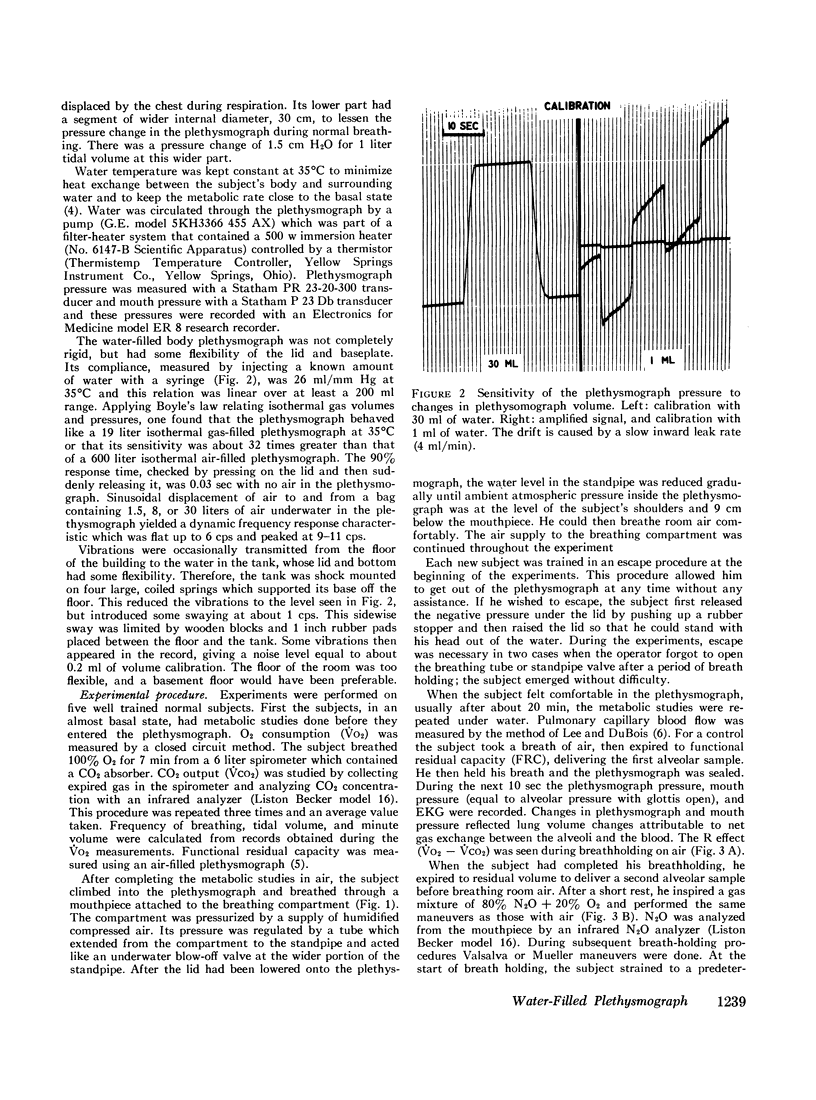
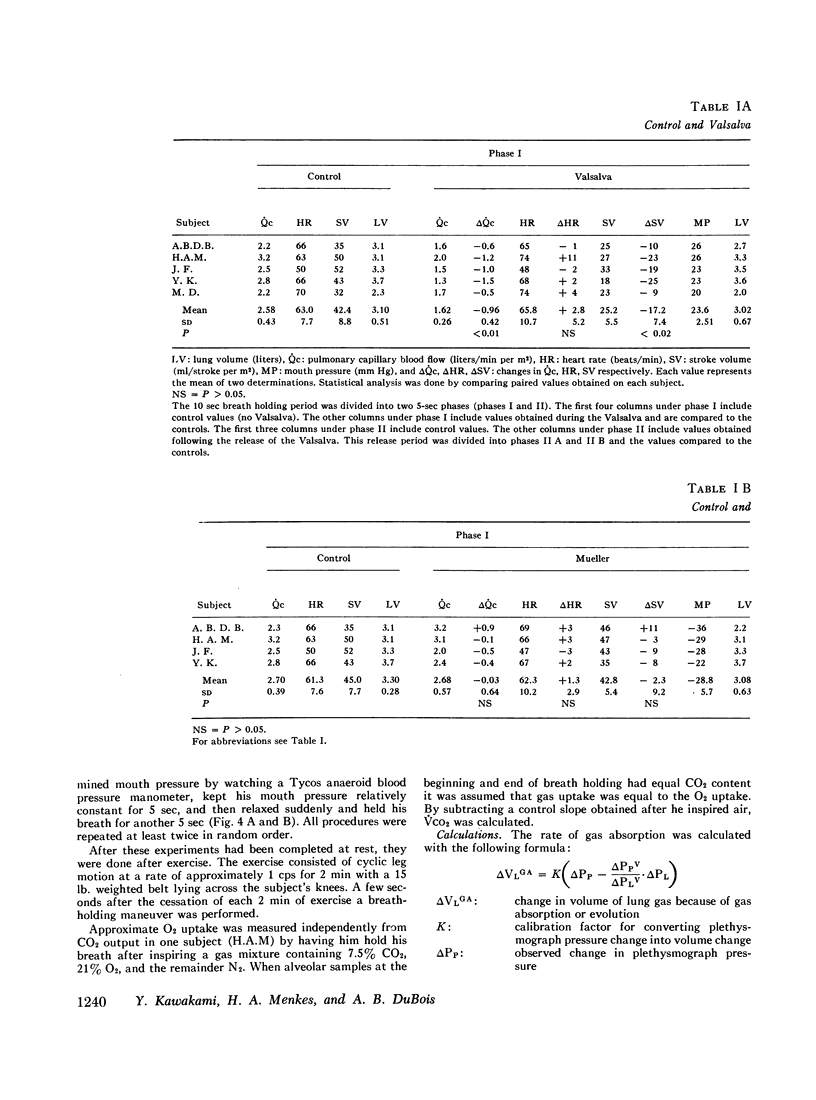
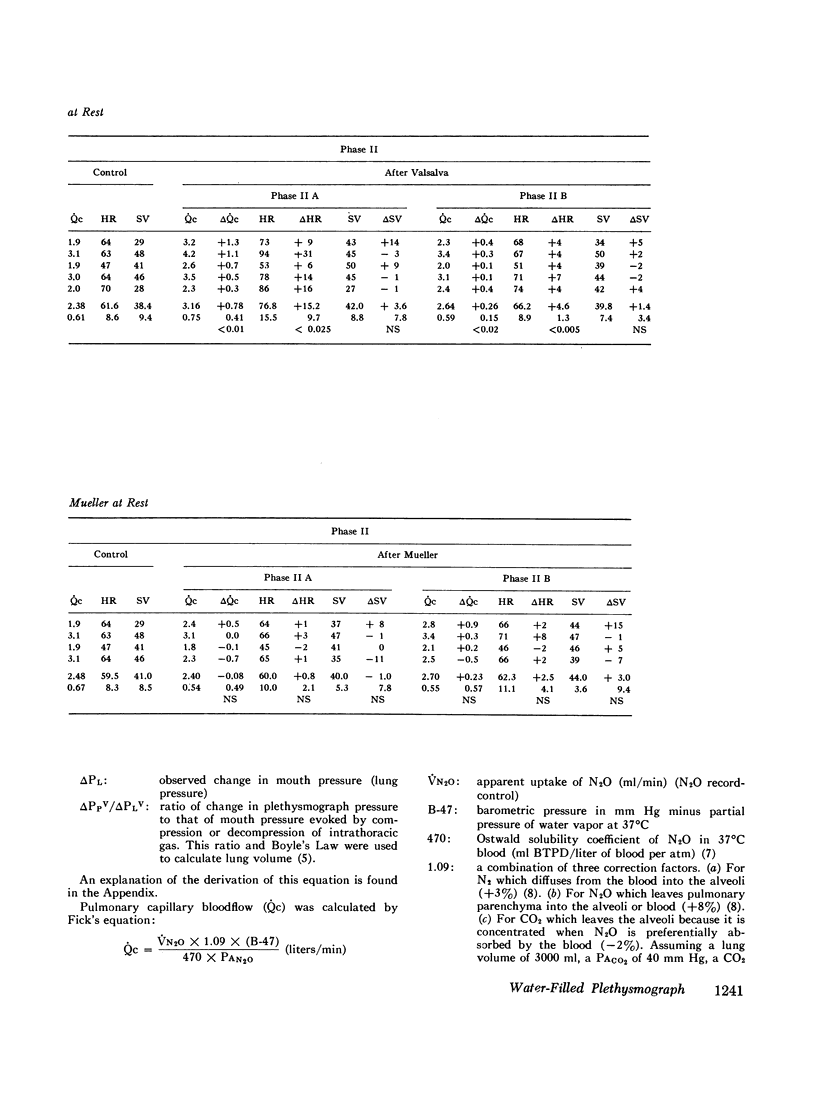
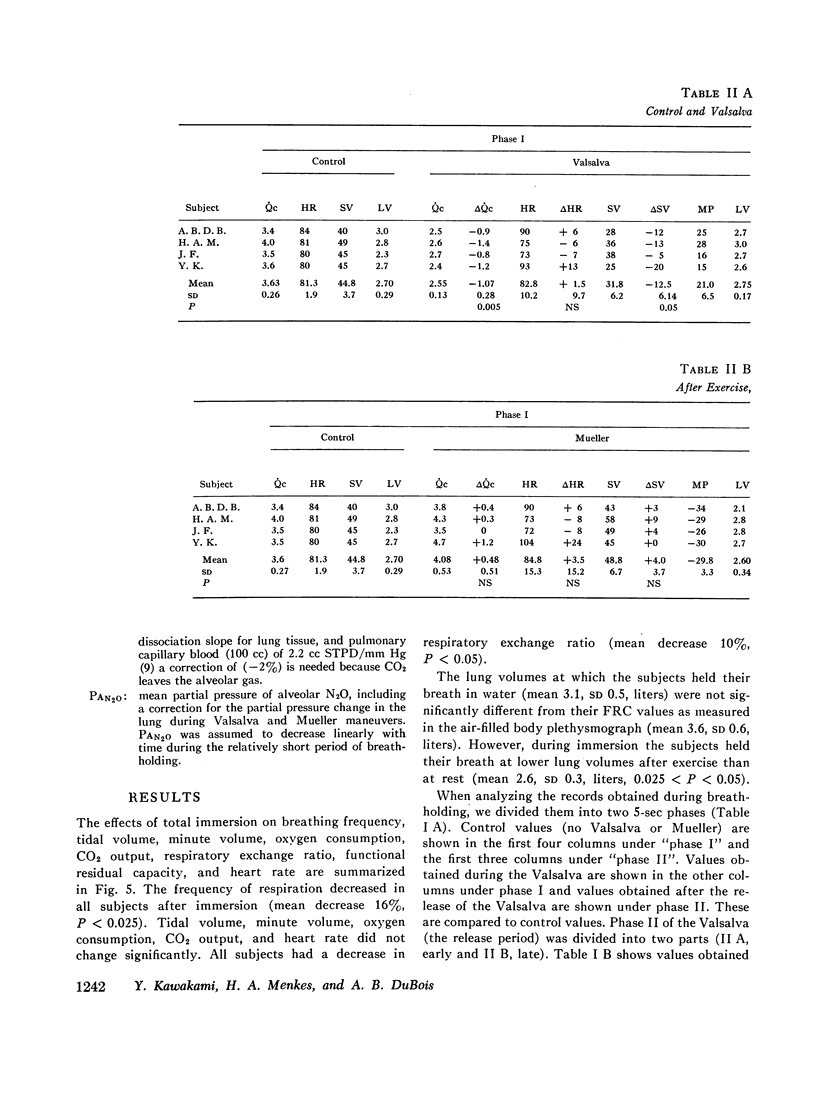
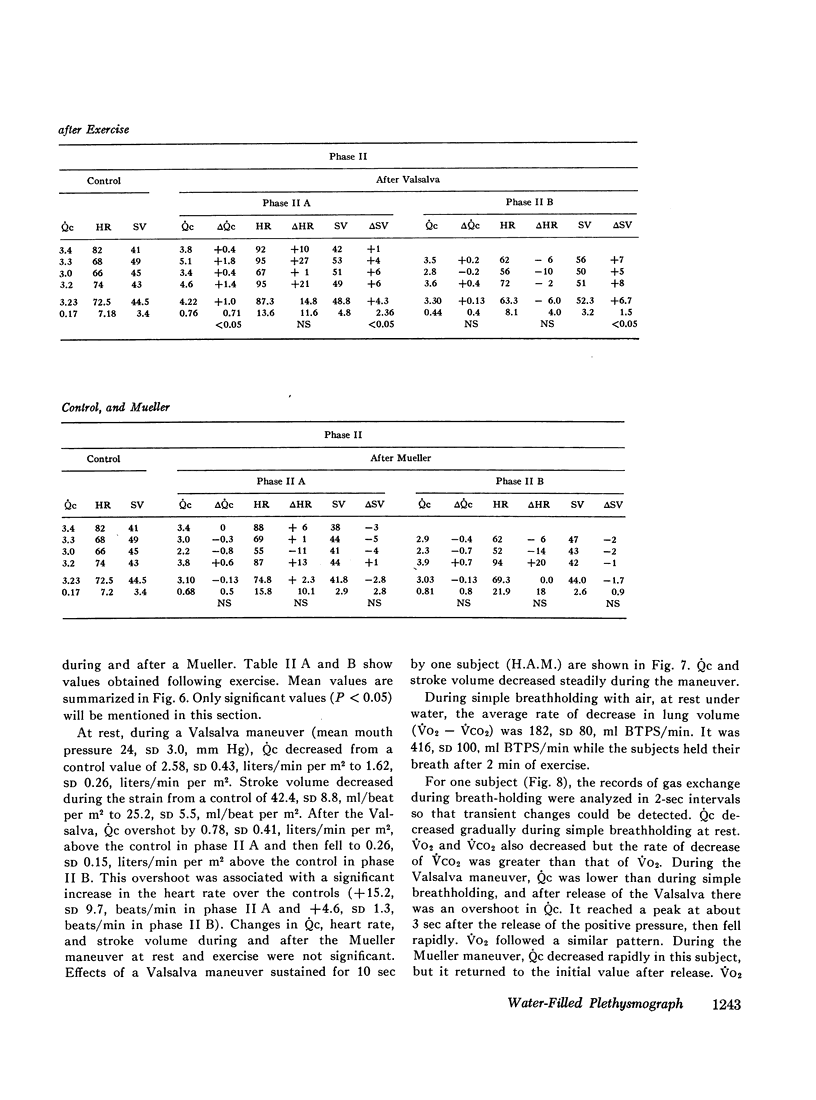
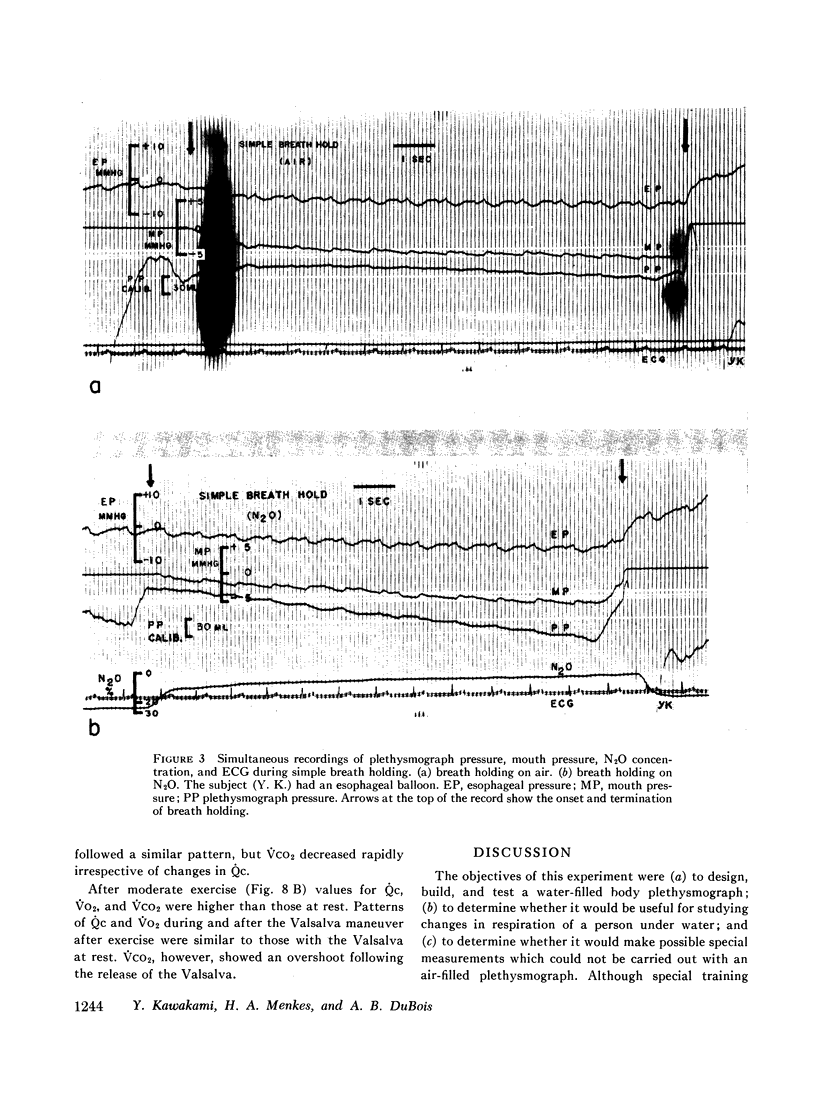
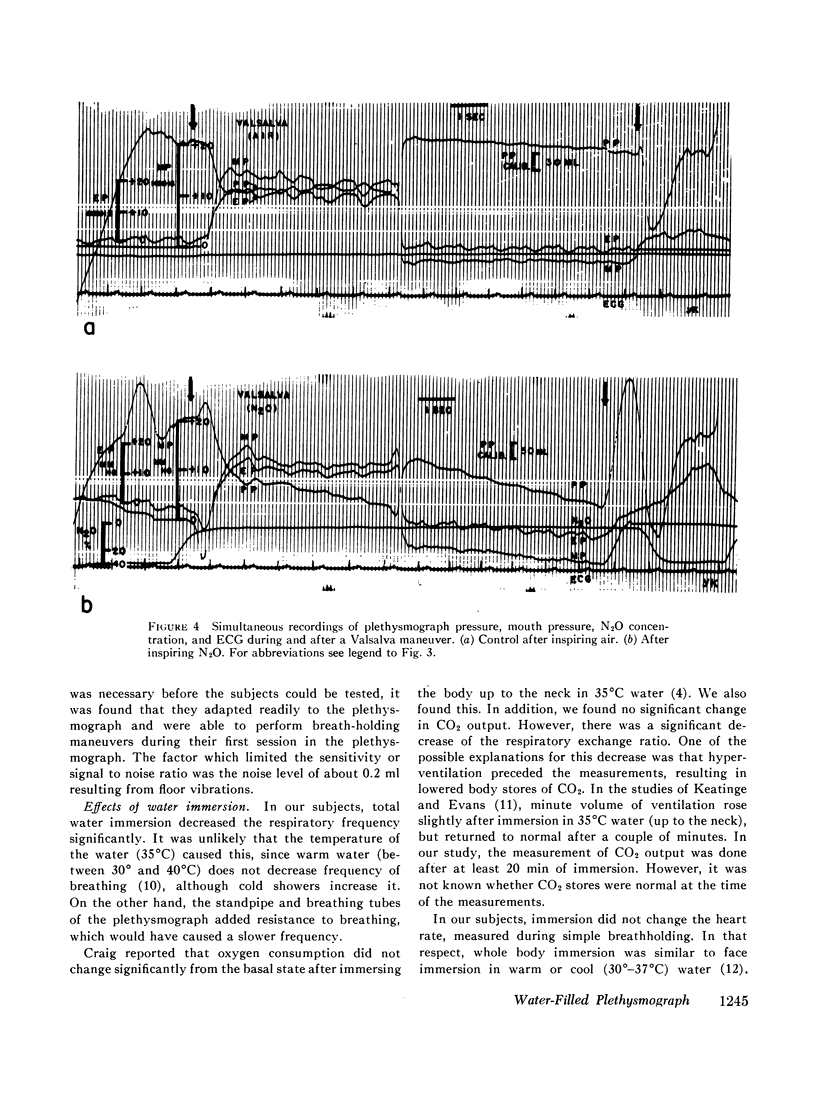
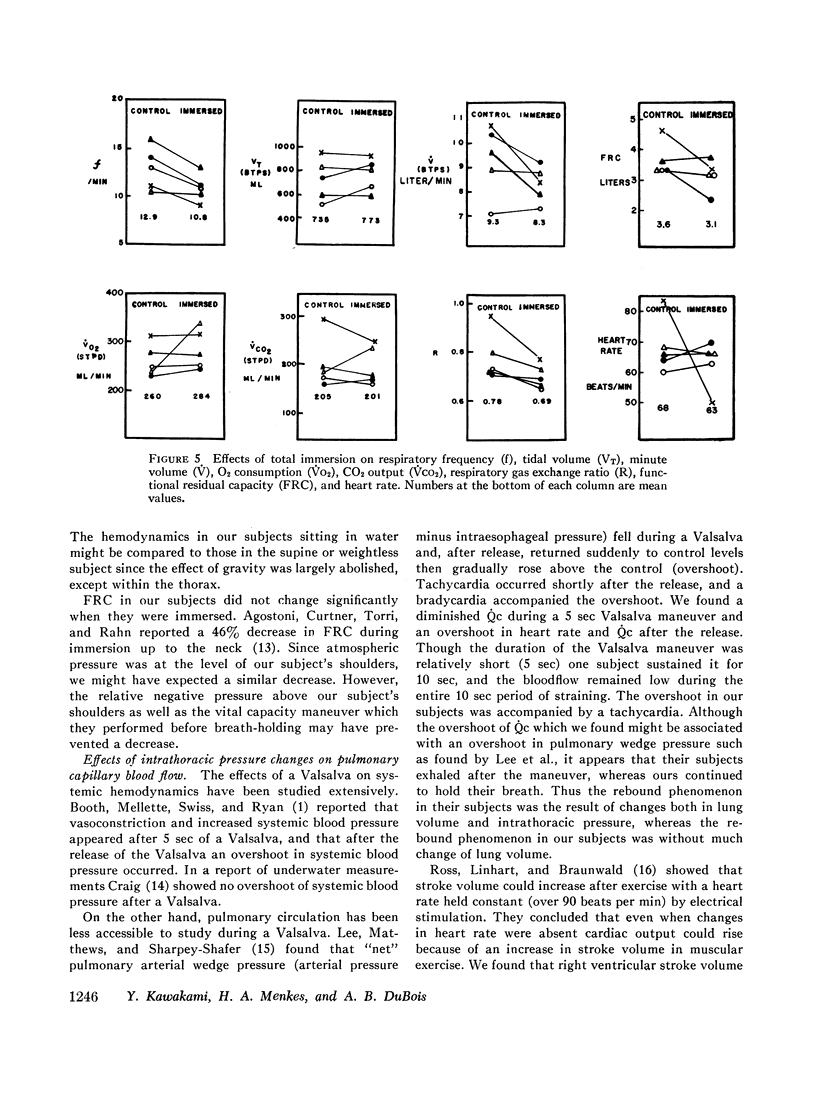
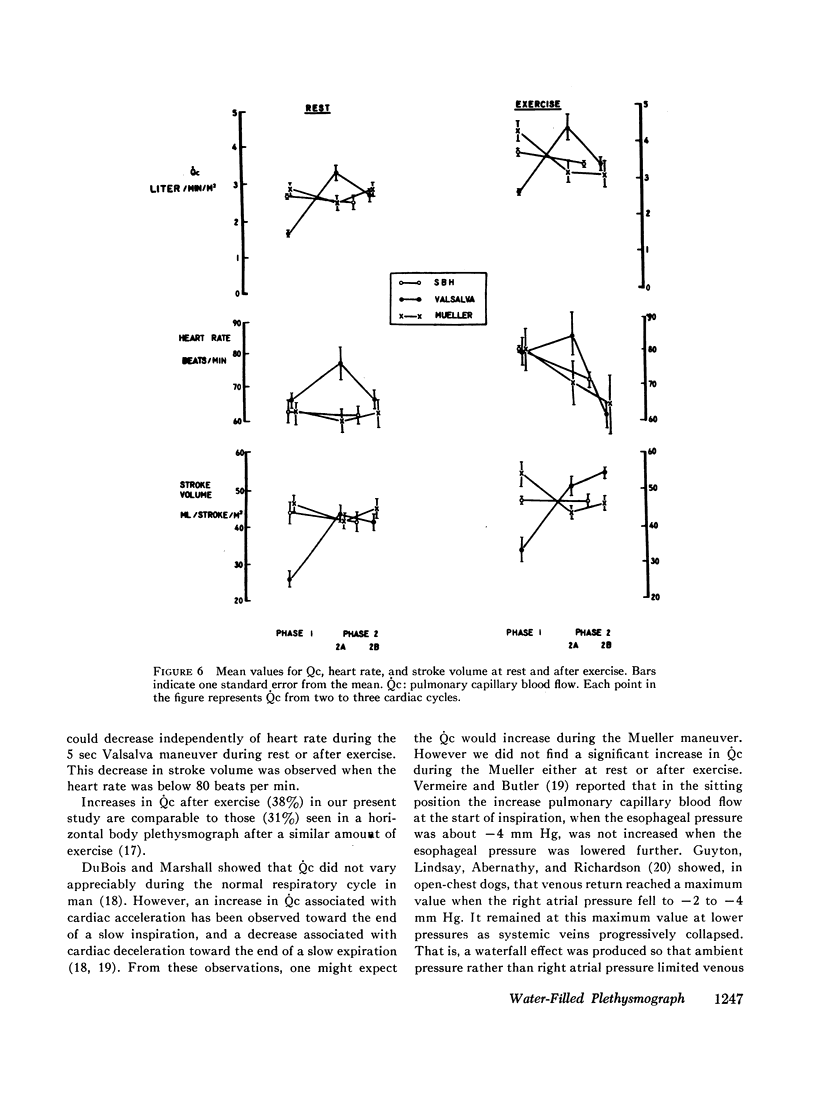
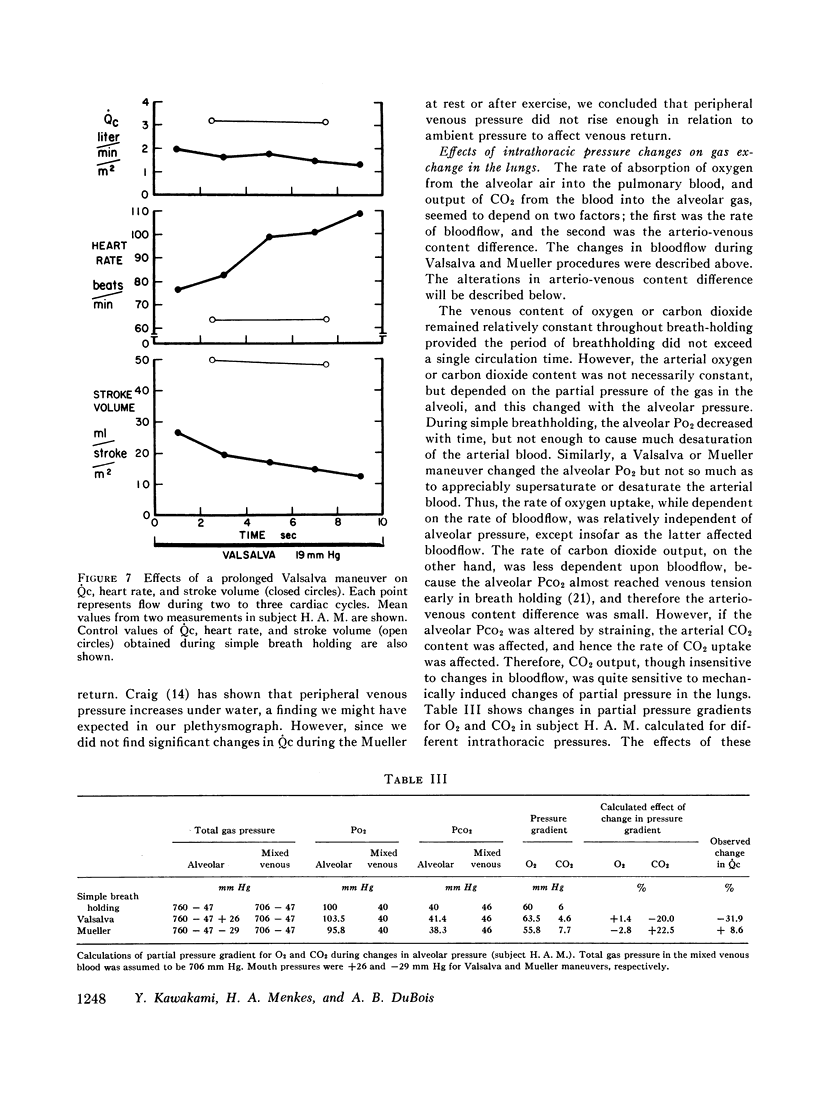
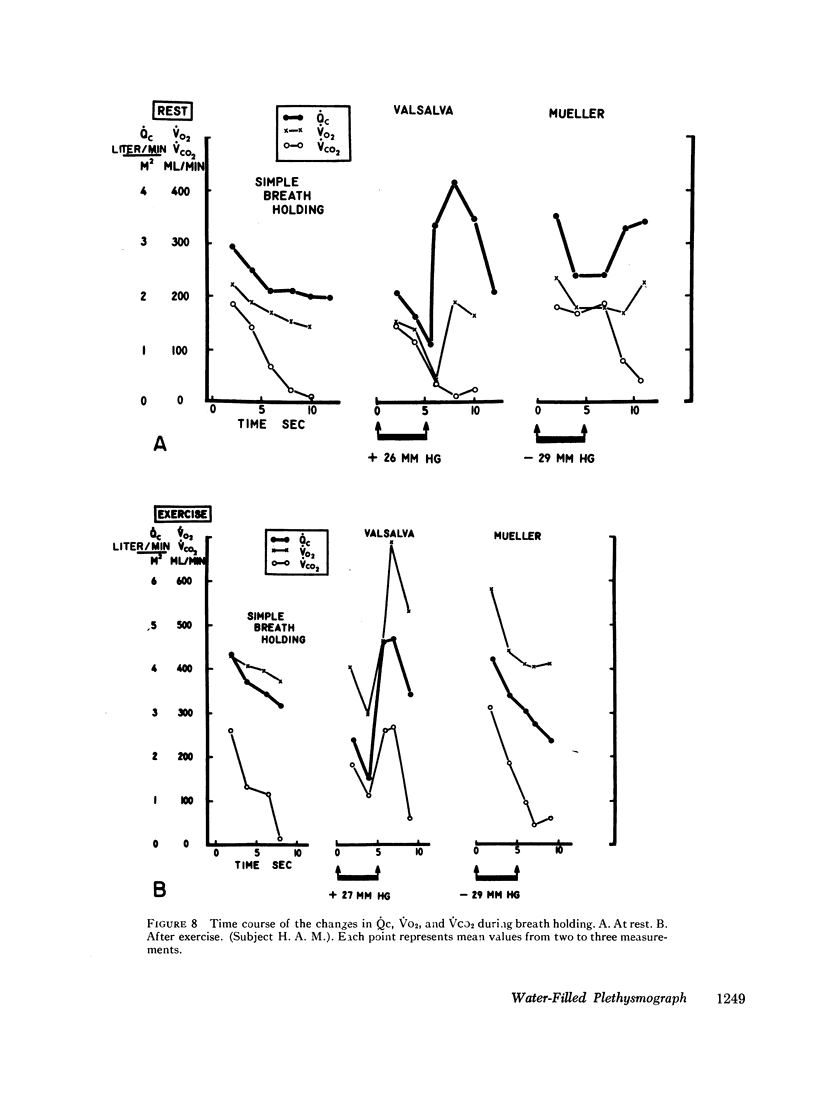
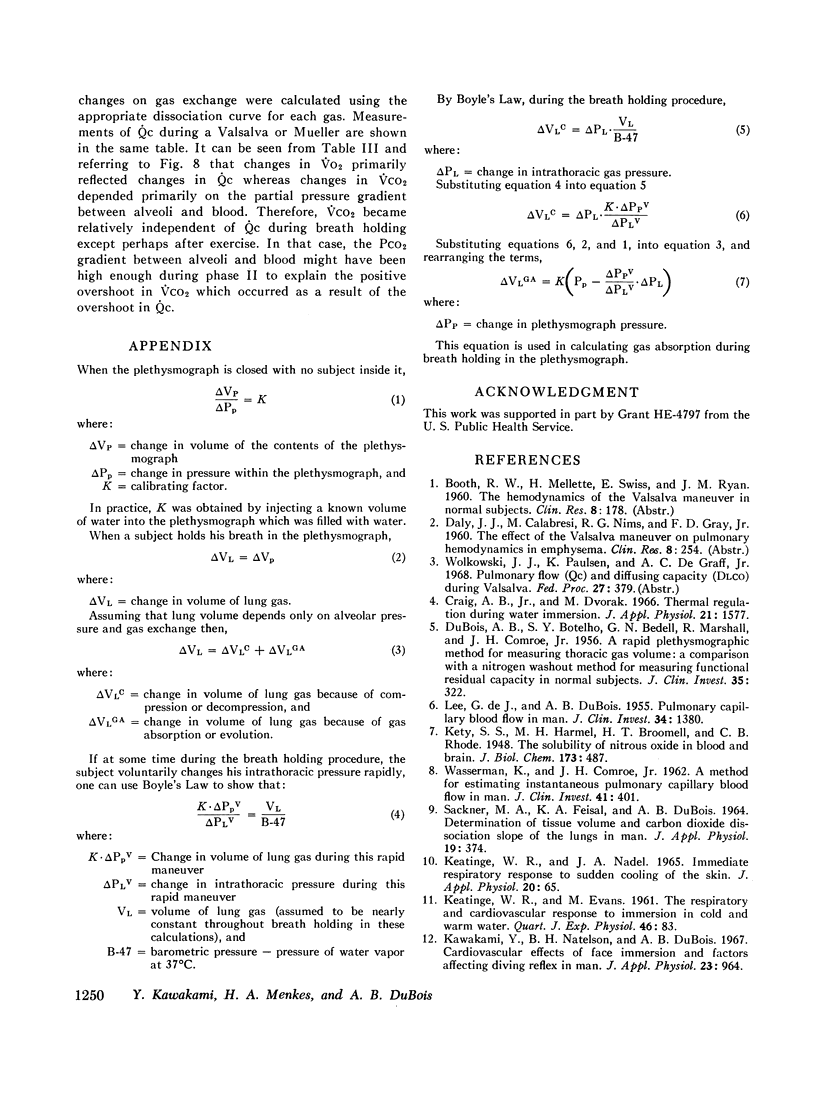
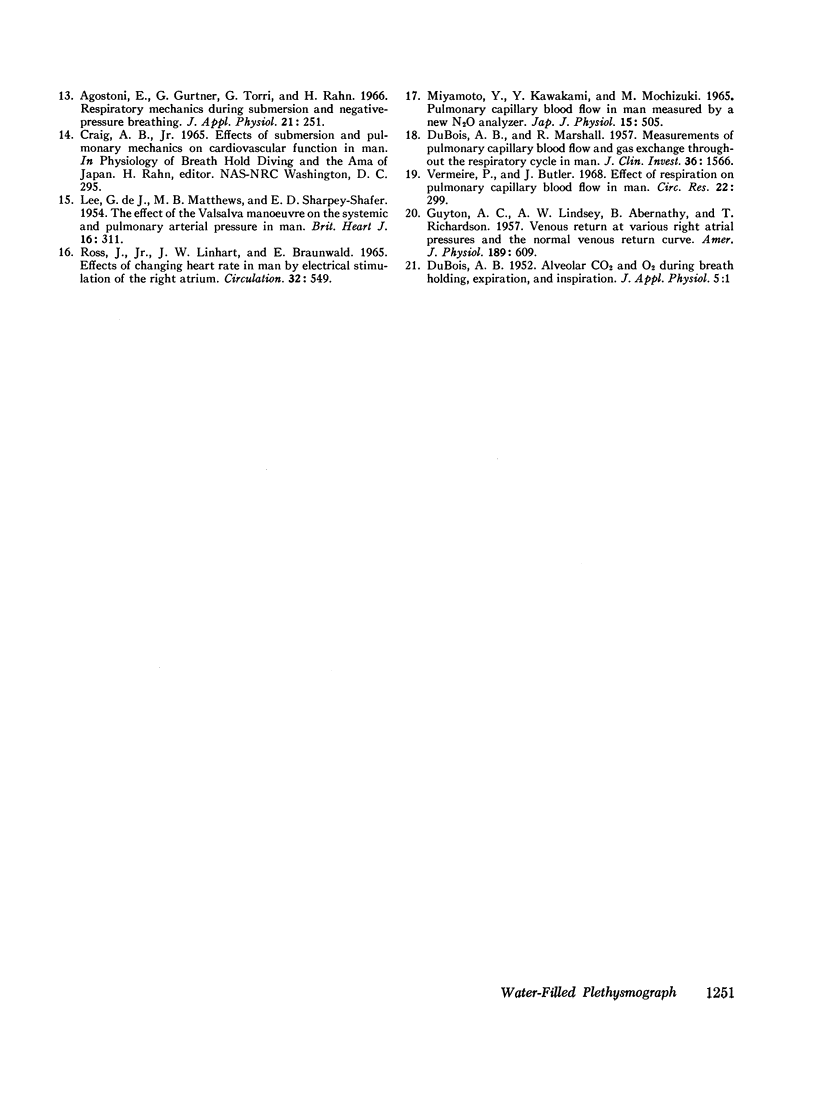
Images in this article
Selected References
These references are in PubMed. This may not be the complete list of references from this article.
- Agostoni E., Gurtner G., Torri G., Rahn H. Respiratory mechanics during submersion and negative-pressure breathing. J Appl Physiol. 1966 Jan;21(1):251–258. doi: 10.1152/jappl.1966.21.1.251. [DOI] [PubMed] [Google Scholar]
- Craig A. B., Jr, Dvorak M. Thermal regulation during water immersion. J Appl Physiol. 1966 Sep;21(5):1577–1585. doi: 10.1152/jappl.1966.21.5.1577. [DOI] [PubMed] [Google Scholar]
- DE LEE G. J., MATTHEWS M. B., SHARPEY-SCHAFER E. P. The effect of the Valsalva manoeuver on the systemic and pulmonary arterial pressure in man. Br Heart J. 1954 Jul;16(3):311–316. doi: 10.1136/hrt.16.3.311. [DOI] [PMC free article] [PubMed] [Google Scholar]
- DUBOIS A. B. Alveolar CO2 and O2 during breath holding, expiration, and inspiration. J Appl Physiol. 1952 Jul;5(1):1–12. doi: 10.1152/jappl.1952.5.1.1. [DOI] [PubMed] [Google Scholar]
- DUBOIS A. B., BOTELHO S. Y., BEDELL G. N., MARSHALL R., COMROE J. H., Jr A rapid plethysmographic method for measuring thoracic gas volume: a comparison with a nitrogen washout method for measuring functional residual capacity in normal subjects. J Clin Invest. 1956 Mar;35(3):322–326. doi: 10.1172/JCI103281. [DOI] [PMC free article] [PubMed] [Google Scholar]
- DUBOIS A. B., MARSHALL R. Measurements of pulmonary capillary blood flow and gas exchange throughout the respiratory cycle in man. J Clin Invest. 1957 Nov;36(11):1566–1571. doi: 10.1172/JCI103554. [DOI] [PMC free article] [PubMed] [Google Scholar]
- GUYTON A. C., LINDSEY A. W., ABERNATHY B., RICHARDSON T. Venous return at various right atrial pressures and the normal venous return curve. Am J Physiol. 1957 Jun;189(3):609–615. doi: 10.1152/ajplegacy.1957.189.3.609. [DOI] [PubMed] [Google Scholar]
- KEATINGE W. R., EVANS M. The respiratory and cardiovascular response to immersion in cold and warm water. Q J Exp Physiol Cogn Med Sci. 1961 Jan;46:83–94. doi: 10.1113/expphysiol.1961.sp001519. [DOI] [PubMed] [Google Scholar]
- KEATINGE W. R., NADEL J. A. IMMEDIATE RESPIRATORY RESPONSE TO SUDDEN COOLING OF THE SKIN. J Appl Physiol. 1965 Jan;20:65–69. doi: 10.1152/jappl.1965.20.1.65. [DOI] [PubMed] [Google Scholar]
- Kawakami Y., Natelson B. H., DuBois A. R. Cardiovascular effects of face immersion and factors affecting diving reflex in man. J Appl Physiol. 1967 Dec;23(6):964–970. doi: 10.1152/jappl.1967.23.6.964. [DOI] [PubMed] [Google Scholar]
- LEE G. D., DUBOIS A. B. Pulmonary capillary blood flow in man. J Clin Invest. 1955 Sep;34(9):1380–1390. doi: 10.1172/JCI103187. [DOI] [PMC free article] [PubMed] [Google Scholar]
- Ross J., Jr, Linhart J. W., Brauwald E. Effects of changing heart rate in man by electrical stimulation of the right atrium. studies at rest, during exercise, and with isoproterenol. Circulation. 1965 Oct;32(4):549–558. doi: 10.1161/01.cir.32.4.549. [DOI] [PubMed] [Google Scholar]
- SACKNER M. A., FEISAL K. A., DUBOIS A. B. DETERMINATION OF TISSUE VOLUME AND CARBON DIOXIDE DISSOCIATION SLOPE OF THE LUNGS IN MAN. J Appl Physiol. 1964 May;19:374–380. doi: 10.1152/jappl.1964.19.3.374. [DOI] [PubMed] [Google Scholar]
- Vermeire P., Butler J. Effect of respiration on pulmonary capillary blood flow in man. Circ Res. 1968 Feb;22(2):299–308. doi: 10.1161/01.res.22.2.299. [DOI] [PubMed] [Google Scholar]
- WASSERMAN K., COMROE J. H., Jr A method for estimating instantaneous pulmonary capillary blood flow in man. J Clin Invest. 1962 Feb;41:401–410. doi: 10.1172/JCI104494. [DOI] [PMC free article] [PubMed] [Google Scholar]



